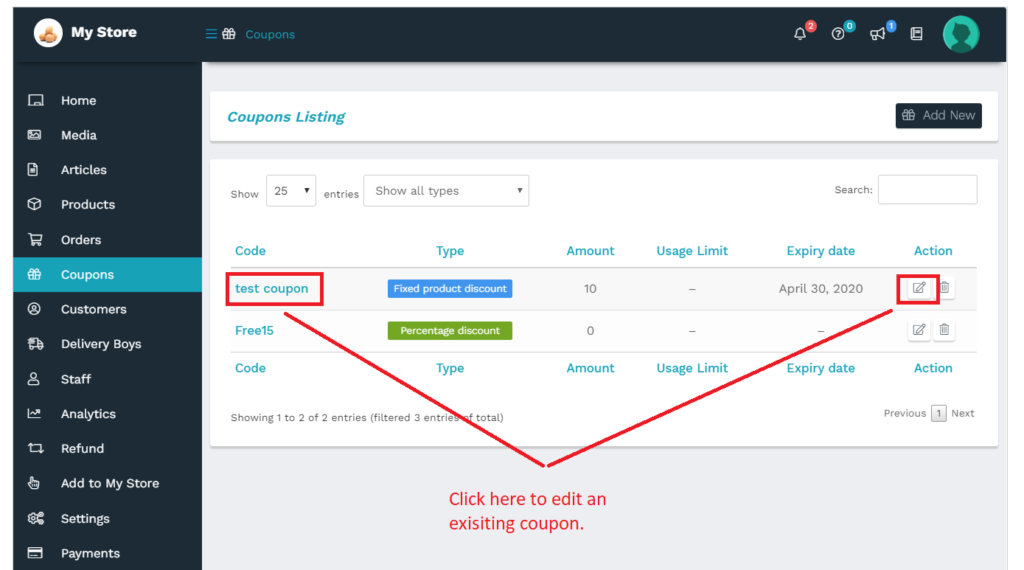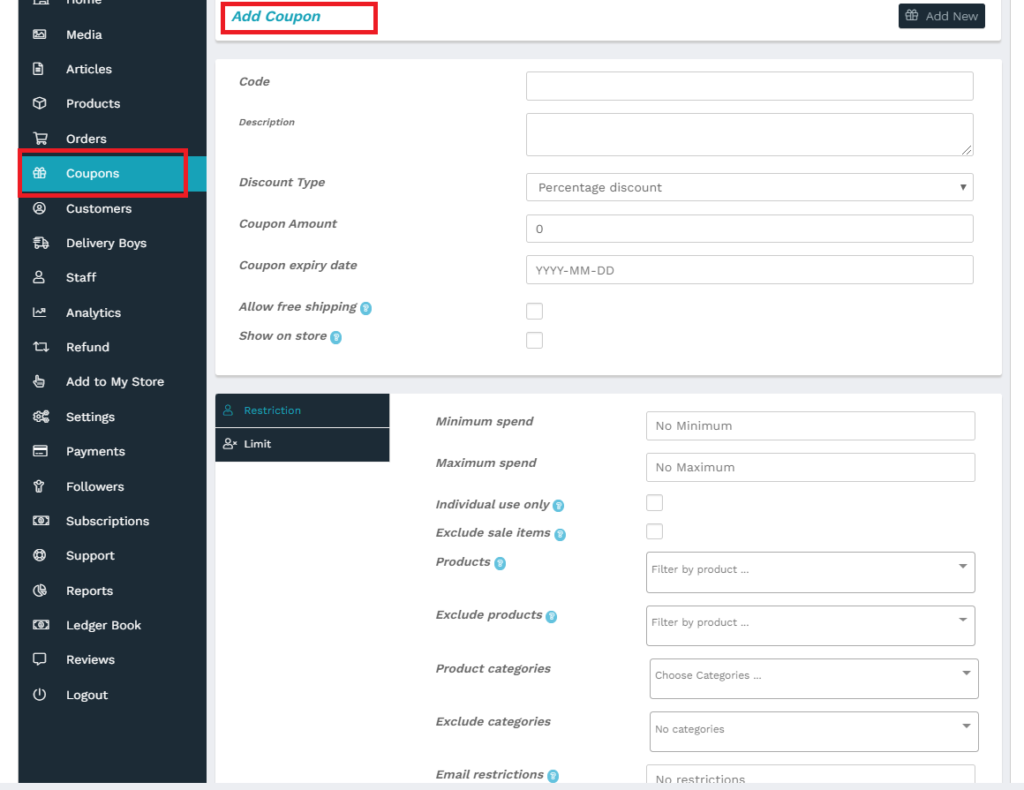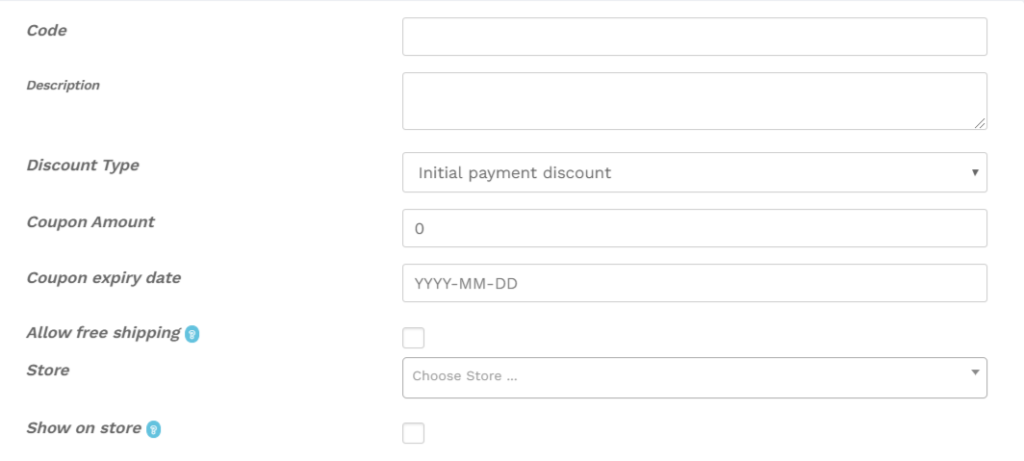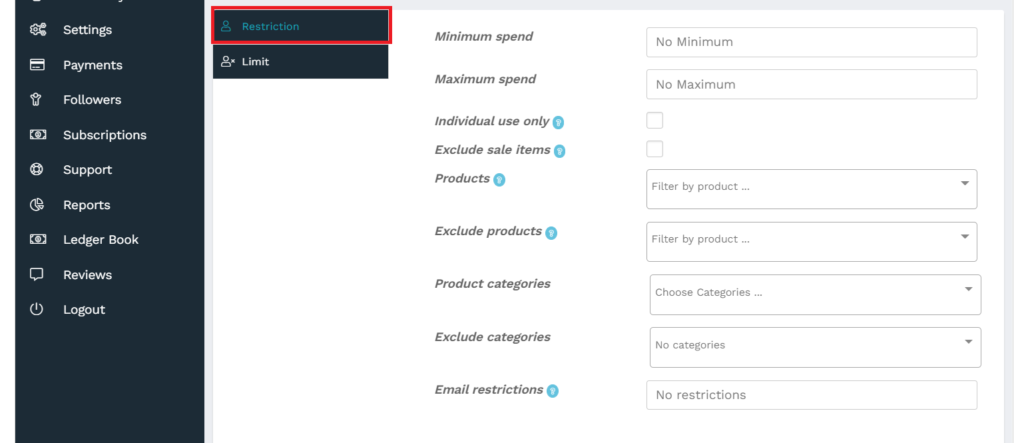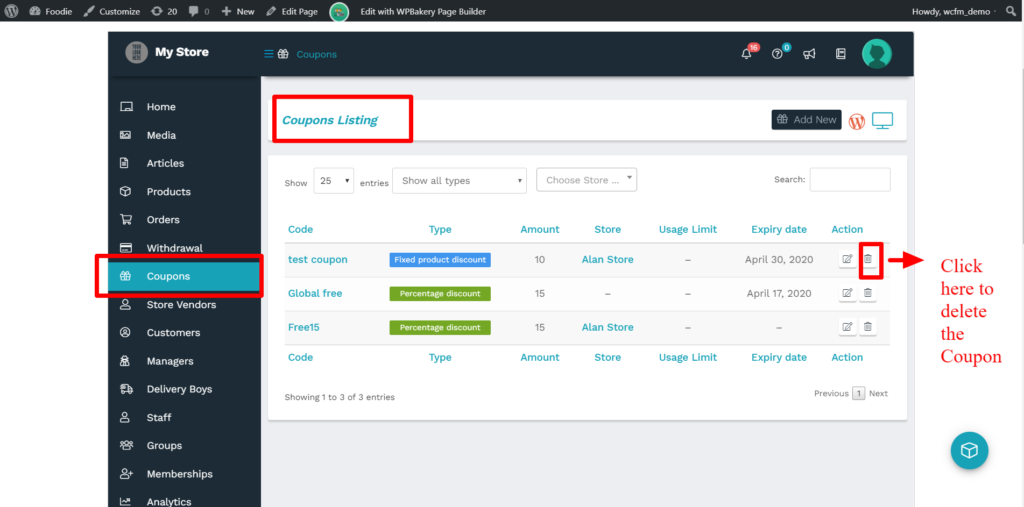Adding a product
Before adding your first product, let’s get familiar with how tags, and attributes work.
Attributes
These can be added per product, or you can set up global attributes for the entire store to use (e.g., in layered navigation).
Product Types
With attributes and categories set up and stock management configured, we can begin adding products. When adding a product, the first thing to decide is what type of product it is.
- Simple – covers the vast majority of any products you may sell. Simple products are shipped and have no options. For example, a book.
- Grouped – a collection of related products that can be purchased individually and only consist of simple products. For example, a set of six drinking glasses.
- Variable – a product with variations, each of which may have a different SKU, price, stock option, etc. For example, a t-shirt available in different colors and/or sizes.
- Auction – A product which has no set price, which enables registered users to place bids on a product, with an auction end date whereas the product will be sold for the final auction price. Auctions can be a soft close which indefinitely extends an auction time every time a bid is made within closing moments of the auction, or standard auction with a set end time and date.
SKU
SKU, or Stock Keeping Unit number, is a unique number assigned to a product for, amongst other things, the purpose of keeping track of inventory.
The SKU field can accept up to 255 characters, which can include alphanumeric values and some special characters. The input is checked using the WordPress function santize_text_field, which means HTML, invalid UTF characters, and octets will be removed when saved (an octet is defined by % followed by 2 characters with a value in the range of a-f or 0-9).
Adding a simple product
Adding a Simple product is similar to writing a post in WordPress.
- Go to Vendor Dashboard > Products > Add Product. You then have a familiar interface and should immediately feel at home.
- Enter a product Title and Description.
- Go to the Product Data panel.
Product data
The Product Data meta box is where the majority of important data is added for your products.
General section
- Price
- Regular Price – Item’s normal/regular price
- Sale Price – Item’s discounted price that can then be scheduled for certain date ranges. The sale expires at 11:59pm of the specified end date
- Tax
- Tax status – Taxable / Shipping only / None
- Tax class – Choose which tax class should be applied
Inventory section
The inventory section allows you to manage stock for the product individually and define whether to allow back orders and more. It enables you to sell products and allow customers to add them to the cart to buy.
Enable Stock Management must be selected in Products Inventory Settings; otherwise, only the ‘Stock status’ option is visible in the Product Data Inventory box.
Options when stock management at product level is disabled. You are responsible for updating the Stock Status.
Options when stock management at product level is enabled.
- Enter the Stock Quantity, and MAHA auto-manages inventory and auto-updates Stock Status as Stock, Out of Stock or On Backorder.
- Select whether to Allow Backorders.
- Low stock threshold – Enter a number upon which you are notified.
- Tick the Sold Individually box to limit the product to one per order.
Shipping section
- Weight – Weight of the item.
- Dimensions – Length, width and height for the item.
- Shipping Class – Shipping classes are used by certain shipping methods to group similar products.
Linked Products section
Using up-sells and cross-sells, you can cross promote your products. They can be added by searching for a particular product and selecting the product from the dropdown list.
Up-sells are displayed on the product details page. These are products that you may wish to encourage users to upgrade, based on the product they are currently viewing. For example, if the user is viewing the coffee product listing page, you may want to display tea kettles on that same page as an up-sell.
Cross-sells are products that are displayed with the cart and related to the user’s cart contents. As an example, if the user adds a Nintendo DS to their cart, you may want to suggest they purchase a spare stylus when they arrive at the cart page.
Grouping – Used to make a product part of a grouped product.
Attributes section
On the Attributes tab, you can assign details to a product. You will see a select box containing global attribute sets you created (e.g., platform).
Once you have chosen an attribute from the select box, click add and apply the terms attached to that attribute (e.g., Nintendo DS) to the product. You can hide the attribute on the frontend by leaving the Visible checkbox unticked.
Custom attributes can also be applied by choosing Custom product attribute from the select box. These are added at the product level and won’t be available in layered navigation or other products.
Advanced section
- Purchase note – Enter an optional note to send the customer after they purchase the product.
- Menu order – Custom ordering position for this item.
- Enable Reviews – Enable/Disable customer reviews for this item.
Product short description
Add an excerpt. This typically appears next to product imagery on the listing page, and the long description appears in the Product Description tab.
Video embeds (oembed) may be used, as of version 3.1x.
Taxonomies
On the right-hand side of the Add New Product panel, there are product categories in which you can place your product, similar to a standard WordPress post. You can also assign product tags in the same way.
Product images
Add a main product image and a gallery of images.
Setting catalog visibility options and feature status
In the Publish panel, you can set Catalog Visibility for your product.
- Shop and search – Visible everywhere, shop pages, category pages and search results.
- Shop only – Visible in shop pages and category pages, but not search results.
- Search only – Visible in search results, but not in the shop page or category pages.
- Hidden – Only visible on the single product page – not on any other pages.
You can also set whether the product is promoted in product categories, up-sells, related products as a Featured Product. For example, you could tick the Featured box on all bundles you sell.
Other ways to set as Featured are described in the below section: Mark a product as Featured.
Adding a grouped product
A grouped product is created in much the same way as a Simple product. Grouped products are like lists of other products in your shop, and as a result do not have prices or stock numbers of their own. To create one, select Grouped Product from the Product Type dropdown.
Create the Grouped product
- Go to: Vendor Dashboard > Products > Add New.
- Enter a Title for the Grouped product, e.g., Back to School set
- Scroll down to Product Data and select Grouped from the dropdown. The price and several other fields disappear. This is normal because a Grouped Product is a collection of ‘child products’, which is where you add this information.
- Publish.
The Grouped product is still an empty group. To this Grouped product, you need to:
- Create products and add them
- Add existing child products
Having the choice to first create Simple products and add them to a Grouped product later; or first create a Grouped product and add Simple products later gives you flexibility to add Simple products to more than one Grouped product.
Add products to the Group
- Go to: MAHA > Products > Add New.
- Select the Grouped product you wish to add products to.
- Scroll down to Product Data and go to Linked Products.
- Select Grouped Products, and search for the product by typing
- Click the products you wish to add.
- Update
- You can drag and drop to reorder the Grouped Products. Once you press Update, the new order will be shown on the product page.
Adding a variable product
Variable products are one of the more complex of product types. They let you define variations of a single product where each variation may have a different SKU, price or stock level.
To save time, it’s possible to use a product and duplicate it to create similar products with variations and other qualities.
Go to MAHA > Products and look through the list for a product you wish to replicate, then click Duplicate.
Deleting a product
To delete a product:
- Go to: MAHA > Products.
- Find the product you wish to delete.
- Hover in the area under the Product name and click Trash.
Mark a product as Featured
To mark a product as featured, go to Products > All Products and select the Star in the featured column. Alternatively, select Quick Edit and then the Featured option.
Filtering products
Use the Filter function to get a product count, view products by type, or see which products are On Backorder or Out of Stock.
- Go to: Vendor Dashboard > Products.
- Select a Category, Product Type and/or Stock Status, or any combination of the three.
- Click Filter.
Filter by category
Use the category filter function to filter products by category.
Note: When the site has fewer than 100 categories, the category filter field will appear as a dropdown. When the number of categories reaches 100, an input search will be used instead of a dropdown.
And unlike dropdown, input search will not show all categories, only categories that are tied to some product.
Sorting products
Sorting is different than Filtering, in that you can drag and drop products to re-order them.
- Go to: Vendor Dashboard > Products.
- Select Sorting.
- Select a Category, Product Type and/or Stock Status, or any combination of the three.
- Click Filter.
You can now drag and drop products in an order to your liking.
Product ID
A Product ID is sometimes needed when using shortcodes, widgets, and links.
To find the ID, go to Products and hover over the product you need the ID for. The product ID number is displayed.
Allow backorders
Select whether to allow Backorders from the dropdown, if you are managing stock on a product. You must check Manage stock to allow backorders.
When Managed stock is checked, there are three dropdown options for under Allow backorders:
- Allow. This will allow backorders without any notice if the product is out of stock
- Do not allow. There will be a notice on the product page that product is out of stock. If Stock notifications is checked, customers will be able to leave their email address to get notified.
- Allow, but notify customer. There will be a notice “Available on backorder” on the product page.
To allow backorders, the Stock status must be set to In Stock even though the Stock Quantity is 0 or less.
When backorders are allowed, stock quantity can go below 0 following backorder purchase.
Use Advanced Notifications (separate purchase) to help notify someone other than the shop admin if backorders are placed.
Please note that in order to fulfill backorders, you would need to find the orders received for the backordered product and then fulfill the oldest ones first by searching for the product on the order screen and then ordering by date.









 Vendor may setup their vacation mode from here.
Vendor may setup their vacation mode from here. 




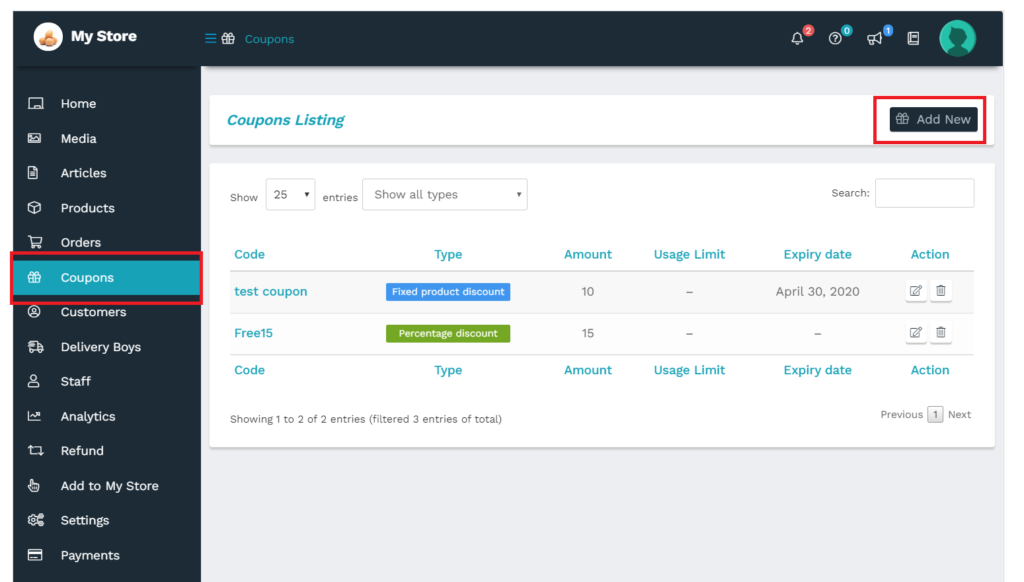 In the same manner, for editing the present coupons, you can click on the existing coupon ( from the list) or click on the edit option under “Action” column.
In the same manner, for editing the present coupons, you can click on the existing coupon ( from the list) or click on the edit option under “Action” column.